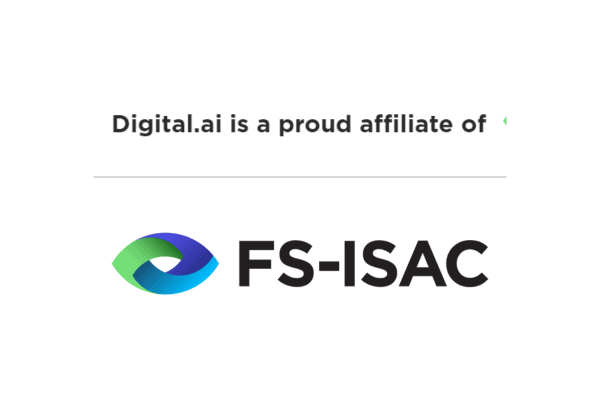Written by Jonny Steiner
The mid-2010s saw some incredible technological successes, especially in the world of financial services. The FinTech disruption, combined with the expansion of cloud adoption, sent a wave of excitement through the industry. This move saw the growth of microservices as nimble independent components replaced old monolithic systems. These days, microservices are increasingly common in financial services, even if their use is not always mature.
Briefly, microservices are a modern software architecture that replaces large complex systems with more minor independent services that communicate between themselves. They are like an NFL team. Just like each player has their position and assignment that, when executed perfectly, helps the offense move the ball forward, microservices also play their position to create a unified process.
It seems like a perfect way to develop web and mobile applications, and it might be if not for the existing monolith legacy systems that so many organizations still employ. They are complex, interconnected, and lethargic, often so tangled that microservice adoption seems impossible.
That is not the only challenge, of course, so let’s dig in.
The FinServ Microservices Migration
Many banks use legacy systems like my grandmother sewed a quilt. They custom-built their systems years ago and are only now beginning to venture into the world of microservices. They were drawn, no doubt, by the promise of better agility and innovation. The transition is more complex, however, as we will see shortly.
- Too Many Tools: The specialized tools used for the existing system might not integrate well with the new microservices architecture. It would be like trying to integrate a phonograph with a B&O Beosystem 72-22. Those conflicts can lead to inefficiencies and delays and might slow down the entire migration process.
- Confusing Clouds: It takes seemingly endless research to comb through the options when searching for the right cloud environment. Each option has its own strengths and weaknesses. Beyond that is the challenge of choosing a container. It all requires careful planning and guidance.
- Scramble to Standardize: Legacy systems are comfortable and familiar, while microservices require standardized practices and protocols. The challenge is to adopt new processes and systems while keeping the team engaged and productive. There will be a learning curve.
Navigating the Migration Maze
Moving a legacy system to microservices can feel like trying to solve a puzzle in a tornado. Sure, you might have all the pieces, but they will be blowing all over the place.
Some strategies can help navigate the complex transition:
- Migrate Gradually: A phased approach that chips away at the migration will minimize disruption and allow the team to adapt as they go and ensure a smooth transition.
- Stay Cloud-Agnostic: Don’t get locked into a single cloud provider. Cloud-agnostic tools are adaptable and allow teams to switch between providers as their needs evolve. It is a flexible solution that keeps the organization in charge.
- Consistent Containers: Standardization is the key to the world of microservices. Using a tool like Docker helps package your microservices and deploy them across any cloud environment.
- Simplified Communication: API Gateways act as entry points to secure and streamline communication between services. Service Meshes give you routing and governance to ensure smooth interactions and a smoothly running microservices ecosystem.
- Use What is Familiar: The best option here is to integrate existing tools from the legacy system into the new architecture. It helps organizations leverage existing tools and tech investments while accelerating migration and efficiency.
How the Largest Financial Institutions Migrate
It might be natural to feel a bit lost when modernizing a complex financial system. Yet many are doing it. Here are some examples of banks that have tackled similar challenges and come out ahead.
- JP Morgan: Has employed microservices in its internal applications, such as its critical fraud detection system and customer-facing chatbot. They accomplished this with a multi-cloud approach, which gave them the flexibility they needed while avoiding being locked into a single cloud provider. They then put focus on their developers to ensure a smooth transition. This helped them break down their legacy fraud detection system into smaller services, helping them detect threats and respond faster. Lastly, leveraging microservices for their chatbot allowed the system to access and process information from different internal systems. JP Morgan is showing how they bring agility and innovation to their most critical financial systems with microservices.
- Barclays: The UK bank uses microservices in its payments platform and wealth management system. They are doing this in two ways. First, they broke down their monolithic systems into specialized teams focused on a specific task. It gives them the ability to develop faster and scale services based on demand. The second aspect of their microservices journey is using CI/CD practices to automate code testing, integration, and deployment. With that, they are releasing updates to the market faster and with stronger scalability.
Making the Journey
It is challenging for financial institutions to migrate from a monolithic system to a microservices architecture. These legacy systems are the main burden these organizations must overcome. However, the benefits they will receive in the form of enhanced agility, scalability, and innovation are impossible to ignore. Starting with a phased approach that leverages cloud-agnostic tools and standardized containers and integration for familiar tools helps FinServ organizations navigate transitional complexities.
JP Morgan and Barclays are two examples of how microservice adoption in the FinServ industry is feasible and advantageous. Using those examples can help financial institutions position themselves as technical leaders and bring continuous improvement to their companies.
The journey to microservices starts with one small step. Careful planning, flawless execution, and a commitment to continuous learning allow financial institutions to unlock microservices’ potential and transform their organizations.
Delve into real-world case studies of major financial institutions that have conquered these challenges by adopting an AI-powered DevSecOps platform in our webinar.
Are you ready to scale your enterprise?
Explore
What's New In The World of Digital.ai
Monolith and Microservices: The Far Side of FinServ Technology
Explore the challenges and strategies of migrating financial services from monolithic systems to microservices, with insights from industry leaders like JP Morgan and Barclays.
Digital.ai and FS-ISAC: Forging a Safer Future in Financial Services
Exciting news: Digital.ai is now a proud affiliate of FS-ISAC, fortifying financial cybersecurity!
Move on Up: The Ultimate Template for Cloud Migrations
Explore a comprehensive template for seamless cloud migration, empowering organizations to streamline continuous testing processes & deliver digital experiences.



